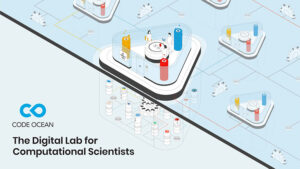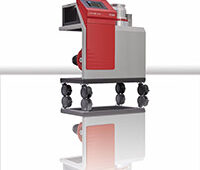By Simon Adar, Ph.D., Co-Founder, and CEO of Code Ocean
According to a report by Grand View Research the global personalized medicine market was valued at $493.1 billion in 2020 and is expected to expand at a compound annual growth rate (CAGR) of 6.2% through 2028. The firm attributes much of this growth to the pursuit of “biomarker identification for therapy, diagnosis, and prognosis for personalized medicine development.” [1]
The potential impact of “personalized” or “precision” medicine is unprecedented and profound. The NIH National Library of Medicine states that precision medicine is an “approach for disease treatment and prevention that takes into account individual variability in genes, environment, and lifestyle,” and “will allow doctors and researchers to predict more accurately which treatment and prevention strategies for a particular disease will work in which groups of people.”[2]
Precision medicine empowers researchers and healthcare providers to develop prevention and treatment options based on individuals’ complete medical data. This emerging area of medicine will be a catalyst for significantly improving healthcare outcomes for millions in the decades ahead.
The increased expectations of precision medicine mean that advanced computational methods for deciphering the mysteries of individual DNA are more critical than ever. The ability to provide better-informed, individually detailed, data-based recommendations about treatment efficacy will transform patients’ lives worldwide.
Unfortunately, there are still countless bottlenecks and technology challenges impeding new efficiencies in computational research. Virtual labs have been limited in their capacity to provide an environment that can support the range and depth of research the scientific community demands, especially for reproducing results. Existing labs are primarily designed and built as ad-hoc solutions for a specific computational experiment.
Worse, without established standards for computational lab environments, it remains daunting, if not impossible to reproduce experiments based on the work of other researchers.
Re-envisioning the virtual lab
 To keep up with breakthroughs in other areas of precision medicine, it’s essential to create a new type of virtual lab with an environment that can provide reproducible results for any computational research experiment.
To keep up with breakthroughs in other areas of precision medicine, it’s essential to create a new type of virtual lab with an environment that can provide reproducible results for any computational research experiment.
One solution that can radically improve the performance of virtual labs is the automation of increasingly complex cloud tools. For example, automated workflows/pipelines can connect multiple process modules for computational science experiments.
With an automated pipeline builder, there is no need for code. Collaborators can use the tool to conduct more experiments at a massively parallel scale in the cloud. Researchers can create an HPC experience in the cloud, including easily authoring complex workflows. This makes it much more efficient to conduct large-scale parallel computing and manage massive data sets with user-friendly methodologies for collaboration across a range of scientific disciplines.
The reproducibility imperative
While computational researchers face numerous challenges in their work, the inability to effectively reproduce the results of an experiment ranks at the top of the list.
Reproducibility is vital, because if a model fails and it’s impossible to determine the exact point of failure, researchers can’t precisely reproduce the experiment, or identify precisely where and why it failed. Instead, they are forced to start over. It’s a completely inefficient process of conducting research, collecting data, and analyzing results.
By creating and supporting an environment that uses an automated laboratory that controls access to data and a consistent computational environment to guarantee reproducibility, every iteration and every experiment is preserved and easily recoverable. There’s never accidental deletion. Researchers can use prior iterations of a given experiment, change some of the criteria, and know exactly which aspects of the results have been affected.
Reproducibility is also suitable for eliminating knowledge silos from experiments conducted on disparate computers. Every iteration is kept in a centralized, secure platform for maximum knowledge reuse with complete visibility. Most important, reproducibility is the key to ensuring that every piece of code that has value is transparent, reproducible, and easy for others to use.
Collaboration leads to results
Better science requires better collaboration. It’s that simple. One of the main challenges to successful collaboration is a lack of tools and processes to ensure producing correct results.
Computational scientists in any department need an open-platform approach to research that enables the rapid adoption of new analytical and computational frameworks as templates for applying the latest methodologies, such as artificial intelligence (AI), machine learning (ML), and advances such as single-cell genetic analysis.
Collaborative decision-making can also be enhanced and accelerated by enabling researchers to run separate experiments simultaneously and share results in real time.
Precision medicine will transform healthcare. Reproducibility will lead the way
Precision medicine is revolutionizing medicine by providing specific genomic data to help healthcare providers determine treatments, drug protocols, and recovery procedures that can best serve an individual patient. But in order to optimize that specialized data, researchers need the ability to reproduce experimental data quickly, efficiently, and collaboratively so that vital information can be easily shared with researchers across specialties.
While achieving that level of reproducibility has been a major hurdle in the commercial sector and in academia, great strides have recently been made as solutions are being vigorously pursued and implemented. I’m confident that the scientific community will soon be in a much stronger position vis-à-vis this issue, ultimately leading to more rapid discovery and improved healthcare outcomes.
Simon Adar is the co-founder and CEO of Code Ocean, a novel computational research laboratory for scientific collaboration and discovery. He was a Runway postdoc awardee at the Jacobs Technion-Cornell Institute and holds a Ph.D. from Tel-Aviv University in the field of Hyperspectral image processing.
Notes:
[1] https://www.grandviewresearch.com/industry-analysis/personalized-medicine-market
Personalized Medicine Market Size 2021-2028, July 2021
[2] https://medlineplus.gov/genetics/understanding/precisionmedicine/definition/
NIH National Library of Medicine, “What is Precision Medicine”






Tell Us What You Think!